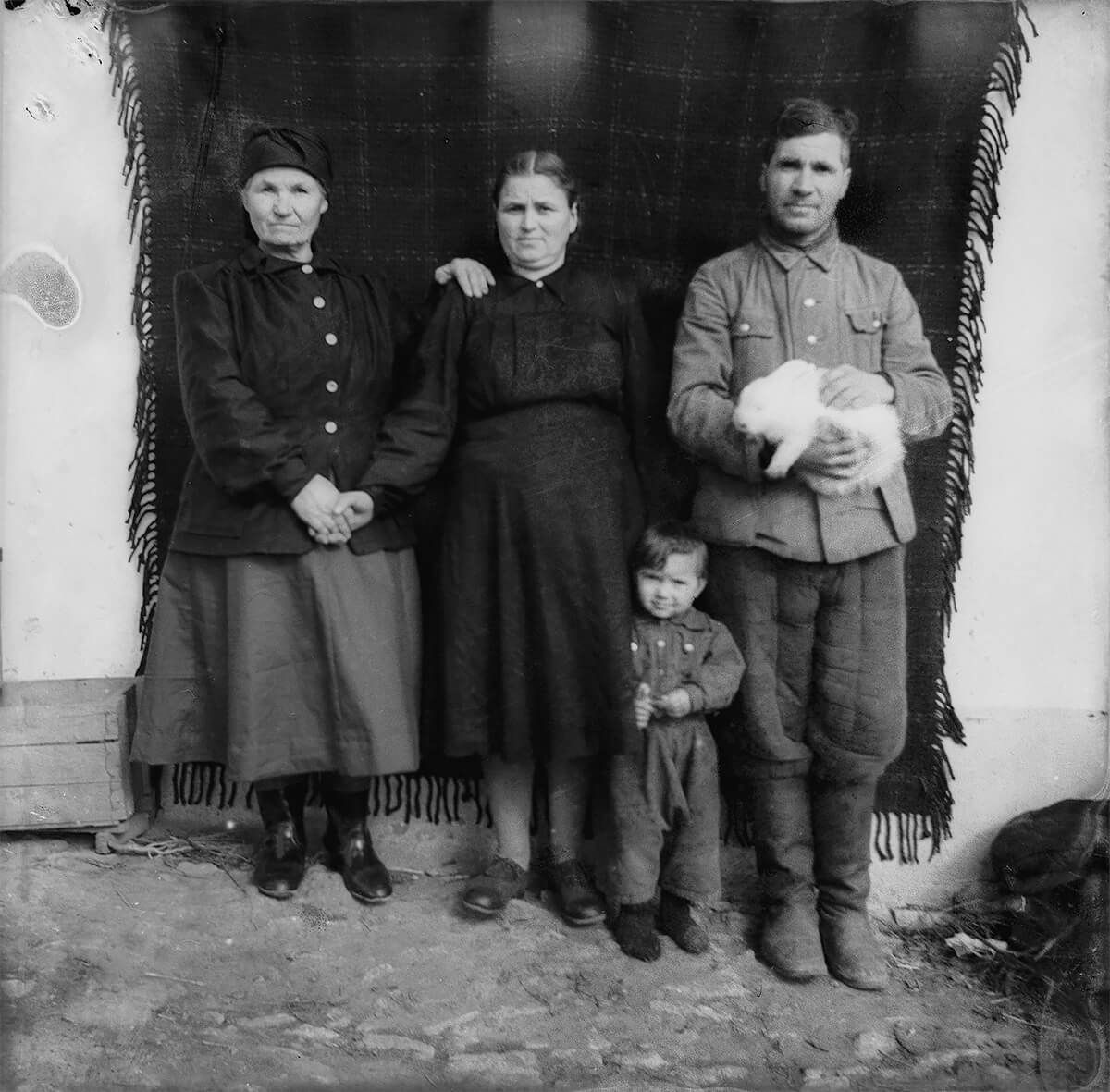Zaharia Cuşnir (1912-1993) was an amateur photographer born in Rosietici village, Floresti region, Moldova. He was photographing people within 1955-1973, and left a collection of negative films 6x6 cm, from which 3751 were discovered in his abandoned house in 2016. The photographs portray groups, landscapes, scenes from everyday life: work in the kolkhoz, weddings, funerals, national celebrations.
Life
Zaharia Cuşnir was born as the last child in the family of 16 children in Rosietici village, Soroca district. His father was a Moldovan businessman (born 1870), and his mother was of German origins (born in approx. 1870). Zaharia was born in Bessarabia, at that time part of the Russian Empire, educated in Romania (Iasi city), and after WW-II, became a USSR citizen. He went to school to the neighbouring Rogojeni village and later attended the pedagogical lyceum in Iasi, Romania. He began teaching in Rogojeni, then though he worked in kolhoz, performing works as carrying stones, digging the frozen ground, carrying loam, destroying fences, herding cows. Villagers also remember him as a blacksmith. He also built a family of 4 children with his wife, Daria.
Zaharia learned photography from his nephew, who returned from the army. The nephew was living in another village, so they decided to split the territory for the photographic activities. So, Zaharia stayed responsible for the surrounding villages: Caşunca, Rogojeni, Țâra, Ghindeşti, Roşietici, and Cenuşa.
The first pictures were taken in 1955. Zaharia was photographing mainly portraits of neighbours and then he was selling the photos. He had a bicycle, which he was usually lending to people for a photograph, as well he had a black blanket, which he was using as a background when he was taking portraits. Up to 1973, he had taken around 4000 pictures of the medium format 6x6 cm. In 1993, after he died, the house was abandoned and the pictures were stocked in a suitcase and placed in the attic.
Discovery
In spring 2016, Victor Galuşca, being a student at the Academy of Arts in Chisinau, Moldova, arrived in Rosietici village to film his documentary film for the bachelor's degree exam. He entered the abandoned house and found several negative films scattered through the trash all around the floor. Victor inquired from the villagers whose house was it and found the daughter of Zaharia Cusnir, living in the neighbourhood. With her permission, within several days, he picked all of them, and together with his photography professor, Nicolae Pojoga started the cleaning and indexing process of the archive.
Among all, there were found old documents, among which was an edited request for admission to the school, adjusted to a stilted language used at the time. There was also found a table of exercises written in Russian Cyrillic script, as well as elementary calculus tests designed for primary school. Other documents and archival remnants reveal a struggle between life and death for the majority of the population; these include bread allowances and checks listing debts.
Further Development
The archive has a high resonance and was appreciated within several exhibitions: at the Museum of Art of Moldova (curated by Cervinscaia Nadejda) and the Romanian Peasant Museum in Romania in 2018, and at the Ethnographic Museum of Transilvania, the Subway Gallery of the House of Arts in Timisoara, Romania and at the Museum of Ethnography and Folklore MARAMUREş from Baia Mare, Romania in 2019. In 2017 a Moldovan Publishing house Cartier published a photo album "Lumea lui Zaharia" ("Zaharia's World"). At the beginning of 2020, was launched the
website and
facebook page, aiming to give open access to the usage of the Zaharia Cusnir archive. The team is working on few coming exhibitions in Europe in 2020.
